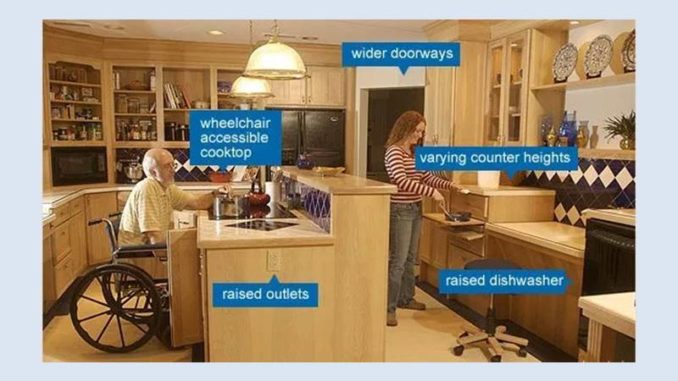
Remaining at your long-term residence as you age may be an attractive option – but it may also require making home modifications to accommodate your needs.
There is no place like home. Given the choice, the vast majority would rather remain in their homes for the rest of their lives.
“Aging in place” refers to the decision to live at the home of your choice as you age. Aging in place recognizes that physical functions decline with age and certain tasks – such as climbing stairs, bending and lifting – become more challenging. Aging in place in your long-term residence may not be right for you, as it is not appropriate for everyone. To age in place, one may need to make changes to a home to enhance its safety and convenience. This may esntail modifications to accommodate needs as circumstances change.
Being proactive and creating a plan for aging in place can help you prepare for unforeseen events that would compromise your ability to live independently. Sensible preparation calls for thinking through the safety and convenience of the home and the accessibility of services to make life easier. Consider the potential costs of home modifications, support services and home care as you put your plan together. Because your safety and well-being are vital, it is essential to revisit this decision periodically to determine if your current living arrangements are still the most suitable option.
Key Requirements for Aging in Place
- Be in generally good health. People who are healthy, mobile and active are good candidates for aging in place.
- Be part of a social network and have family support. Those who have a circle of family and friends who live nearby and can check on them, stop by and be a resource are generally the best candidates.
- Live in a home with a favorable floor plan. While a home’s floor plan can be modified, some dwellings are not ideal for aging in place. Homes that have steep driveways, are accessible only by a large number of steps, or have living space on multiple levels may not be suitable if one ages with mobility challenges. The wrong layout may isolate you from friends and older visitors, as well as impact your own mobility in later years.
- Be able to drive and/or have access to transportation. Having a driver’s license or easy access to public transportation is essential to independence. When eyesight or reflexes diminish or driving capability is curtailed for other reasons, it often becomes a trigger for rethinking aging in place.
Financial Considerations: Modifications to a home to accommodate the needs of an older adult living in their own residence and services to lessen burden of home ownership should be considered. Changes may be minor – such as $2,000 to equip the bathroom with grab bars, add a shower bench and adjust the shower entry. Or, changes could be more substantial, such as renovations to widen doorways for wheelchair access or create a first-floor master suite, and could add up to hundreds of thousands of dollars. Another option may be to bring in care to the home. The national median annual rate in 2015 for homemaker services or home health services was $45,760, based on a $20 national median hourly rate multiplied by 44 hours per week and 52 weeks.
Family Considerations: If family members live in the area, it may be possible for them to assist with transportation to medical appointments and running errands. However, some people find that family members are either not always available or have other responsibilities like work or family. Placing additional responsibilities on family members is something that needs to be proactively discussed. If you do not reside near family members, how would you get around if you were to lose the ability to drive? You may become isolated, which could lead to loneliness and depression.
Lifestyle Considerations: Driving and transportation are important factors for ensuring the success of aging in place. Many simple household tasks can be handled by service providers. Arrangements for shoveling snow, handyman tasks, preparing meals and housekeeping can be made as needed.
Healthcare Considerations: Healthy residents who can drive or who have transportation can keep up with regular doctor visits. As you get older, you can bring in home healthcare services to provide assistance with medical and non-medical care.
Post sponsored by Certified Financial Planner (CFP) Garry Kachkovsky. If you have questions regarding financial planning or investment management, give Garry a call at 858-450-9711 or email at garry@kachkovskyandfisher.com. For more information, visit http://www.kachkovskyandfisher.com/
Kachkovsky & Fisher is a Registered Investment Advisory Firm. This information is general in nature, is not a complete statement of all information necessary for making an investment decision, and is not a recommendation or a solicitation to buy or sell any security. Investments and strategies mentioned may not be suitable for all investors. Past performance may not be indicative of future results. Investors should consider the investment objectives, risks, charges and expenses associated with savings plans before investing.
Editor’s note: This is sponsored content, purchased by the author, and reflects the author’s views. It may not reflect the views of UCCA or University City News. Sponsored content must conform to UCCA’s Bylaws. Publication does not constitute an endorsement. For more information about sponsored content, contact us at https://www.universitycitynews.org/contact-us-or-volunteer-in-uc/
For related posts
, visit https://www.universitycitynews.org/category/sponsored-content/


